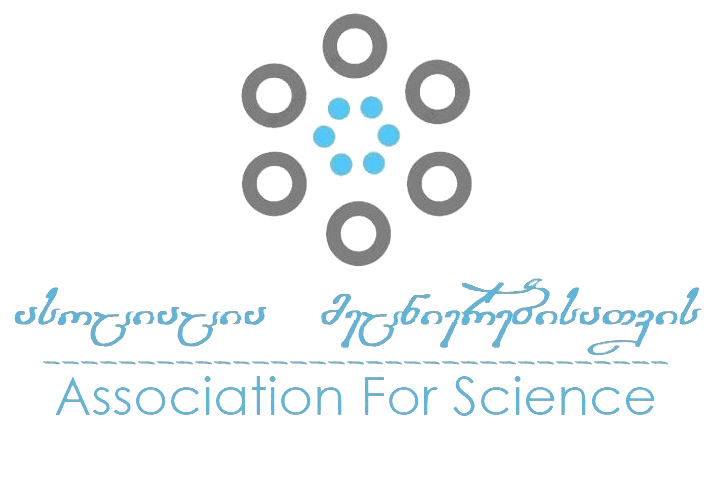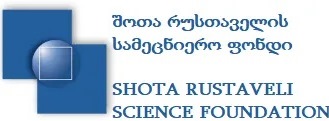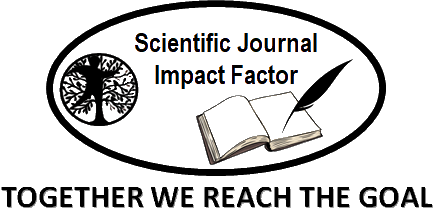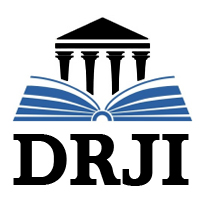Urbanism Under Turco-Mongol Rule: Excavations at Otrar, Kazakhstan
DOI:
https://doi.org/10.55804/TSU-ti-1/CampbellAbstract
The city of Otrar in southern Kazakhstan (42°51'8.64"N/ 68°18'9.26"E; (Figure 1) was occupied from around the 4th-5th century AD and abandoned in the 18th century (Akishev, Baipakov, and Erzakovich 1972:81, 1981, 1987; Baipakov 1990). Exploiting the waters of the nearby Syr Darya river to create a fertile hinterland which supported the urban population (Clarke, Sala, and Meseth 2005; Toonen et al. 2020), written sources indicate it was the location of major historical events from the Mongol Conquest to the death of Timur (Bregel 2003:36, 42; Juvaini (trans. J. Boyle) 1997:82–85; Rashid al-Din (trans a. W.M. Thackston) 2012:170–71; f488-90; Zimin’ 1914). Today, the site consists of a raised mound or shahristan known as Otrartobe, an 18m tall mound of decayed mudbrick architecture and occupation deposits within a larger urban zone covering around 170 hectares (Akishev et al. 1972:43–50; Fodde, Sala, and Deom 2013). The site has been extensively excavated (Akishev et al. 1972, 1981, 1987; Akylbek 2013; Baipakov 2013; Baipakov and Erzakovich 1991; Campbell 2020, 2021) with ample information about various neighbourhoods, and broad chronological understanding of the character of occupation. Abandonment deposits have been found and equated to the Mongol Conquest but the stratification of the coin hoard used to date this phase was somewhat unclear (Akishev et al. 1987:18) and so the precise chronology of occupation at Otrar and the extent to which it was continuously inhabited remains obscure. The work described here presents an initial attempt to further investigate the complex sequence of occupation at the site between the 12th and 14th centuries.
References
References
Akishev, K. A., K. M. Baipakov, and L. B. Erzakovich. 1972. Drevniĭ Otrar: Topografiia, Stratigrafiia, Perspectivy [Ancient Otrar: Topography, Stratigraphy, Perspectives]. Almaty: Kazakhstan SSR Academy of Sciences.
Akishev, K. A., K. M. Baipakov, and L. B. Erzakovich. 1981. Pozdnesrednevekovyi Otrar, XVI-XVIII Vekakh [Otrar in the Late Middle Ages, 16th-18th Centuries]. Almaty: Kazakhstan Academy of Sciences.
Akishev, K. A., K. M. Baipakov, and L. B. Erzakovich. 1987. Otrar v XIII-XV Vekakh [Otrar in the 13th-15th Centuries]. Almaty: Kazakhstan Academy of Sciences.
Akylbek, S. Sh. 2013. “Otyrar Qamaldary [Otrar Defenses].” Otyrar Mūralary/ Tarikhi-Mădeni, Ghylymi-Tanymdyk Zhyrnal [Otrar Heritage: Culture-Historical and Culture Journal] 2(3):13–30.
Baipakov, K., and L. Erzakovich. 1991. Ceramics of Medieval Otrar. Almaty: Oner.
Baipakov, K. M. 1990. Po sledam drevnikh gorodov Kazakhstana (Otrarskiĭ oazis) [Traces of the Ancient Cities of Kazakhstan (Otrar Oasis)]. Alma-Ata: Nauka Kazakhskoĭ SSR.
Baipakov, K. M. 2013. Drevniaia v Srednevekovaia Urbanizatsiia Kazakhstana. Kniga II: Urbanizatsiia Kazakhstana v IX-Nachale XIII Vekakh [Ancient and Medieval Urbanisation of Kazakhstan. Book 2: Urbanisation of Kazakhstan from the IX to the Start of the XIII Century]. Almaty: Kazakhstan Academy of Sciences.
Bregel, Yuri. 2003. An Historical Atlas of Central Asia. Leiden & Boston: Brill.
Brun, Pierre, and A. Annaev. 2000. “The Excavation of Curtain C6 and Tower T7 (Citadel, North Wall).” Pp. 21–28 in The International Merv Project Preliminary Report on the Eighth Season (1999). Vol. 3, edited by G. Herrmann, K. Kurbansakhatov, and S. J. Simpson. Iran (38): Taylor & Francis.
Brun, Pierre, and Akmohammed Annaev. 2001. “The Fortifications of Sultan Kala.” Pp. 33–41 in The International Merv Project Preliminary Report on the Ninth Year (2000), edited by G. Herrmann, K. Kurbansakhatov, and S. J. Simpson. Iran (39): British Institute of Persian Studies.
Campbell, Katie. 2020. “The City of Otrar, Kazakhstan: Using Archaeology to Better Understand the Impact of the Mongol Conquest of Central Asia.” Pp. 597–606 in Proceedings of the 11th International Congress on the Archaeology of the Ancient Near East, edited by L. K. and A. H. Adelheid Otto, Michael Herles, Kai Kaniuth. Wiesbaden: Harrassowitz Verlag.
Campbell, Katie. 2021. “Cities and the Mongol Conquest: Urban Change in Central Asia 1200-1400.” PhD Thesis: University of Oxford.
Clarke, D., R. Sala, and E. Meseth. 2005. “Reconstructing Irrigation at Otrar Oasis, Kazakhstan, AD 800-1700.” Irrigation and Drainage 54(May):375–88.
Cooke, Louise. 2008. “Approaches to the Conservation and Management of Earthen Architecture in Archaeological Contexts.” UCL: PhD Thesis.
Dawkes, Giles, Willem Toonen, Mark Macklin, and Gaygysyz Jorayev. 2019. “The Form and Abandonment of the City of Kuik-Mardan, Otrar Oasis, Kazakhstan in the Early Islamic Period.” Journal Of Islamic Archaeology 6(2):pp137-152. doi: 10.1558/jia.37961.
Fodde, E., R. Sala, and J. Deom. 2013. “Managing and Conserving Large Oases in Southwest Kazakhstan.” Conservation and Management of Archaeological Sites 15(2):152–68.
Henshaw, Christina, Thilo Rehren, O. Papachristou, and Abdulhamid A. Anarbaev. 2007. “Lead-Glazed Slipware of 10th - 11th Century Akhsiket, Uzbekistan.” in Archaeometric and Archaeological Approaches to Ceramics : Papers presented at EMAC ‘05, 8th European Meeting on Ancient Ceramics, Lyon 2005. Oxford: BAR International Series
Herrmann, G., K. Kurbansakhatov, and St John Simpson. 2001. “The International Merv Project. Preliminary Report on the Ninth Year (2000).” Iran (39) 9–52.
Herrmann, Georgina. 1999. Monuments of Merv: Traditional Buildings of the Karakum. London: The Society of Antiquaries.
Horne, Lee. 1994. Village Spaces : Settlement and Society in Northeastern Iran. Washington, D.C ; London: Smithsonian Institution Press.
Jorayev, Gai. 2020. “Otrar Archaeological Site; Digital Geospatial Dataset 2016.” UCL Data Repository. Retrieved (https://rdr.ucl.ac.uk/articles/dataset/Otrar_archaeological_site_digital_geospatial_dataset_2016/11690835).
Jorayev, Gai, Katie Campbell, Sarah Ritchie, Victoria Sluka, and Kairat Zhambulatov. 2022. “The Medieval Cities of Otrar Oasis, Kazakhstan: Kuik-Mardan Excavation and Field Season 2018, Short Preliminary Report.” UCL. doi: 10.5522/04/20055275.v1
Juvaini (trans. J. Boyle). 1997. Genghis Khan: The History of the World Conqueror. Manchester: University of Manchester Press.
Lunina, S. B. 1969. “Arkheologo-Stratigraficheskoe Izuchenie Gorodishcha Sultan-Kala, Ego Obvodov i Zapadnoĭ Chasti Prigoroda [Stratigraphic Study of Archaeology of Sultan Kala, Its Topography and Western Environs].” Pp. 109–71 in Trudy Iuzhno-Turkmenistana Arxeologicheskaia Kompleksnaia Ekspeditsiia Tom XIV [Proceedings of the Archaeological Expedition of Southern Turkmenistan (YuTAKE) Vol. XIV], edited by M. E. Masson. Ashgabat: Turkmen Academy of Sciences.
Petersen, Andrew. 2013. “The Archaeology of Death and Burial in the Islamic World.” Pp. 1–21 in The Oxford Handbook of the Archaeology of Death and Burial, edited by L. Nilsson Stutz and S. Tarlow.
Pugachenkova, Galina A. 1958. Puti Razvitiia Arkhitektury Iuzhnogo Turkmenistana Pory Rabovladeniia i Feodalizma [The Architecture of Southern Turkmenistan in Antiquity and the Middle Ages]. Moscow: Trudy IuTAKE VI.
Qozhaev, Mūkhtar. 1996. Otyrardaghy Keramika Ȯndīrīsī Keramicheskoe Proizvodstvo Otrara [Old Ceramic Furnaces and Ceramic Production at Otrar]. Turkistan: Mūra.
Rante, Rocco. 2022. The Oasis of Bukhara. Volume 2, Archaeological Pluridisciplinary Activities and Historical Study / Rocco Rante, Florian Schwarz, Luigi Tronca. Leiden: Brill.
Rashid al-Din (trans. W.M. Thackston). 2012. Classical Writings of the Medieval Islamic World : Persian Histories of the Mongol Dynasties / Translated and Annotated by Wheeler M. Thackston. London: I.B. Tauris.
Reimer, Paula J., William E. N. Austin, Edouard Bard, Alex Bayliss, Paul G. Blackwell, Christopher Bronk Ramsey, Martin Butzin, Hai Cheng, R. Lawrence Edwards, Michael Friedrich, Pieter M. Grootes, Thomas P. Guilderson, Irka Hajdas, Timothy J. Heaton, Alan G. Hogg, Konrad A. Hughen, Bernd Kromer, Sturt W. Manning, Raimund Muscheler, Jonathan G. Palmer, Charlotte Pearson, Johannes van der Plicht, Ron W. Reimer, David A. Richards, E. Marian Scott, John R. Southon, Christian S. M. Turney, Lukas Wacker, Florian Adolphi, Ulf Büntgen, Manuela Capano, Simon M. Fahrni, Alexandra Fogtmann-Schulz, Ronny Friedrich, Peter Köhler, Sabrina Kudsk, Fusa Miyake, Jesper Olsen, Frederick Reinig, Minoru Sakamoto, Adam Sookdeo, and Sahra Talamo. 2020. “The IntCal20 Northern Hemisphere Radiocarbon Age Calibration Curve (0–55 Cal KBP).” Radiocarbon 62(4):725–57.
Toonen, Willem H. J., Mark G. Macklin, Giles Dawkes, Julie A. Durcan, Max Leman, Yevgeniy Nikolayev, and Alexandr Yegorov. 2020. “A Hydromorphic Reevaluation of the Forgotten River Civilizations of Central Asia.” Proceedings of the National Academy of Sciences of the United States of America. doi: 10.1073/pnas.2009553117.
Williams, Tim, Katie Campbell, Gaygysyz Jorayev, Paul Wordsworth, Rejep Jepbarov, and Sebastien Moriset. 2018. “Semi-Fortified Palatial Complexes in Central Asia: New Work at the Great Kyz Kala, Merv, Turkmenistan.” Archaeology International 21:153–69. doi: 10.5334/ai-395.
Wordsworth, Paul. 2018. “Traditions of Monumental Decoration in the Earthen Architecture of Early Islamic Central Asia.” in Earth in Islamic Architecture. Historical and Anthropological Perspectives, edited by S. Pradines. Leiden: Brill.
Zimin’, L. A. 1914. “Podrobnosti Smerti Timura [Details of Timur’s Death].” Pp. 37–52 in Protokoly Zasedaniy i soobshcheniya chlenov Turkestanskogo Kruzhka lyubiteley arkheologii. (11 dekabrya 1913 g. 1 aprelya 1914 g). [Minutes of meetings and reports from members Turkestan Circle of lovers of archeology. (December 11, 1913 April 1, 1914)]. Tashkent: Elnar.










